Definition And Main Differences
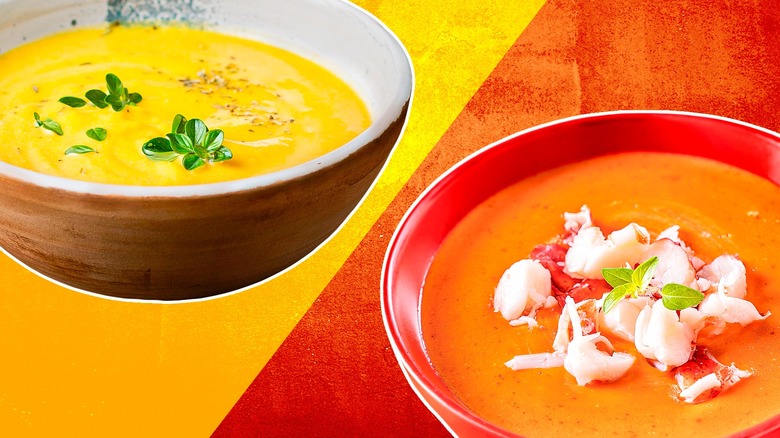
When it comes to deciphering the soup spectrum, it’s important to understand the definitions and main differences between chowder, soup, and bisque. Chowder is a hearty and chunky soup with a creamy base, often featuring seafood. Soup, on the other hand, is a versatile dish that can be made with a variety of ingredients, offering a range of flavors and textures. Bisque, meanwhile, is a smooth and velvety soup, typically made with pureed seafood and enriched with wine and cream. These distinct characteristics set each soup apart and make them unique in their own right.
Definition Of Chowder, Soup, And Bisque
Chowder, soup, and bisque are all types of culinary creations that fall under the category of soups. Chowder is a hearty and chunky soup, typically made with a creamy base and often featuring seafood like clams or corn. Soup, on the other hand, is a versatile dish that can be made with a variety of ingredients, offering a range of flavors and textures. Bisque is a smooth and velvety soup, usually made with pureed seafood and enriched with wine and cream. These distinctions in consistency and ingredients set each type of soup apart and make them unique in their own right.
Main Characteristics That Differentiate Chowder, Soup, And Bisque
Chowder, soup, and bisque may all fall under the category of soups, but they have distinct characteristics that set them apart. Chowder is known for its hearty and chunky texture, often featuring ingredients like seafood or corn. It typically has a creamy base, making it rich and indulgent. Soup, on the other hand, is a versatile dish that can be made with various ingredients, resulting in a wide range of flavors and textures. Bisque, in contrast, is a smooth and velvety soup, usually made with pureed seafood and enriched with wine and cream. These differences in texture and ingredients give each type of soup its unique identity. So next time you’re in the mood for a warm and comforting bowl of soup, consider whether you’re craving a chunky chowder, a flavorful soup, or a silky bisque.
Chowder
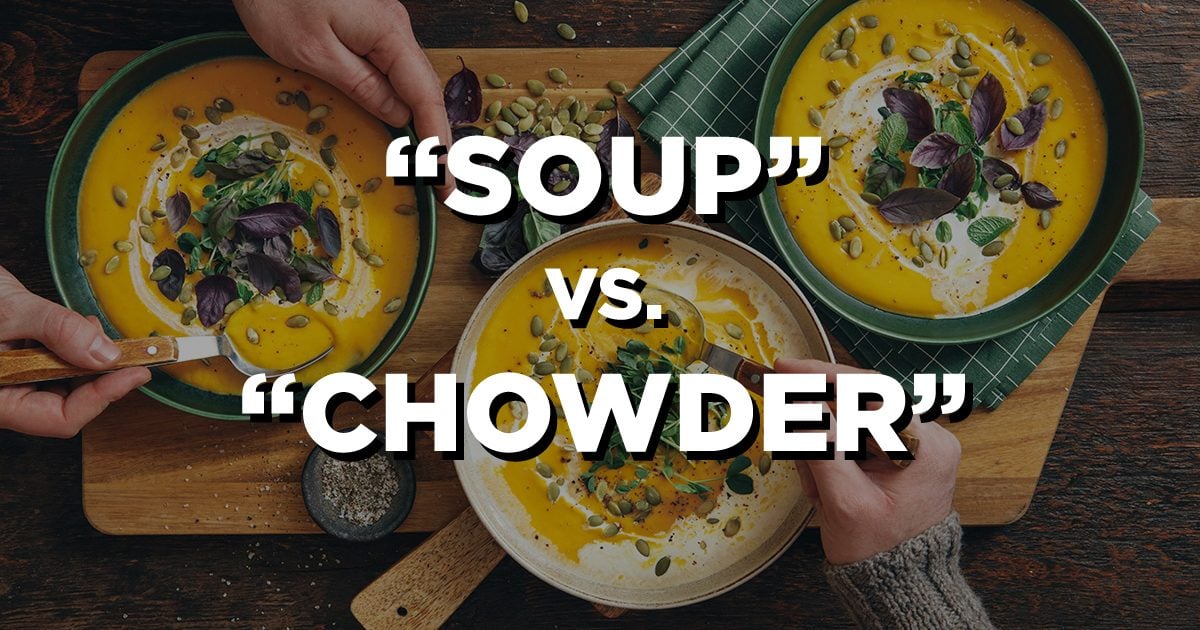
Chowder is a beloved type of soup known for its hearty and chunky texture. Originating from the coastal regions of North America, chowder has become a staple dish in many households and restaurants. Its main distinguishing feature is the inclusion of ingredients like seafood or corn, which add a delicious depth of flavor. Unlike traditional soups, chowder has a creamy base, often made with milk or cream, giving it a rich and indulgent taste. The combination of tender chunks of meat or seafood and the creamy broth creates a satisfying and comforting meal. Whether enjoyed on a cold winter’s day or as a delicious seafood treat, chowder is a true delight for soup lovers.
Chowder Origins And Popular Variations
Chowder has its origins in the coastal regions of North America, particularly in New England. It is believed to have been introduced by early settlers, who combined local ingredients with European cooking techniques. Over the years, chowder has gained popularity and has become synonymous with hearty and flavorful seafood soups. One of the most famous variations is New England Clam Chowder, made with clams, potatoes, onions, and a creamy base. Other popular variations include Manhattan Clam Chowder, which features a tomato-based broth, and Corn Chowder, made with sweet corn and sometimes bacon. Each variation brings its own unique flavors and textures to the table, making chowder a versatile and crowd-pleasing dish.
Key Ingredients And Preparation Techniques In Chowder
Chowder is known for its rich and flavorful combination of ingredients. Key ingredients in chowder typically include seafood such as clams, fish, or shrimp, along with hearty vegetables like potatoes, onions, and celery. The base of the chowder is usually made with cream or milk, which gives it a creamy and indulgent texture. To enhance the flavors, herbs and spices like thyme, parsley, and black pepper are often added. Preparation techniques for chowder involve sautéing the vegetables and seafood, adding the broth and cream, and simmering until the flavors meld together. This slow-cooked method allows the ingredients to develop their full flavors and creates a thick and hearty consistency. So, whether it’s a New England Clam Chowder or a Corn Chowder, the key to a delicious chowder lies in the careful balance of ingredients and the cooking process.
Soup
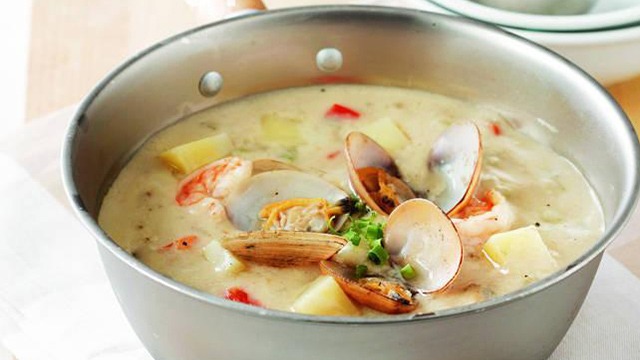
Soup is a versatile dish that knows no boundaries when it comes to ingredients and flavors. From a comforting bowl of chicken noodle soup to a spicy bowl of Tom Yum, soups come in endless variations across cultures. They are made by combining various ingredients like meat, vegetables, or legumes, and can have a thin or thick consistency depending on the recipe. Soups not only provide nourishment but also hold cultural significance in many societies. They are often enjoyed as a starter or a main course and can be customized to suit individual preferences. So, whether it’s a cozy winter evening or a refreshing summer lunch, soups are a go-to option to satisfy cravings and provide essential nutrients.
Types Of Soups And Their Global Variations
Soups are a beloved culinary creation that has taken countless forms throughout different cultures around the world. From the comforting bowl of warm chicken noodle soup in Western cuisine to the spicy and tangy Tom Yum soup in Thai cuisine, there is a wide range of soup varieties to please every palate. Other popular global soup variations include French onion soup, Italian minestrone, Mexican tortilla soup, Japanese miso soup, and Indian lentil soup, just to name a few. Each culture infuses its own unique blend of ingredients and flavors, resulting in a diverse and delicious selection of soups to explore and enjoy. Whether you prefer a hearty and filling soup or something light and refreshing, there is a soup out there for everyone. So, embark on a culinary adventure and discover the world of soups, one spoonful at a time.
Cultural Significance And Nutritional Benefits Of Soups
Soups hold a significant place in cultures around the world, often symbolizing comfort, nourishment, and connection. In many countries, soups are not just a meal but a tradition that brings families and communities together. They are often passed down through generations, carrying with them the flavors and memories of a particular culture.
From the rich and hearty stews of Europe to the spicy broths of Asia, soups reflect the unique ingredients and culinary traditions of each region. They showcase the local produce, spices, and techniques, providing a glimpse into the cultural heritage and diversity of a place.
In addition to their cultural significance, soups also offer various nutritional benefits. They are a great way to incorporate a wide range of vegetables, legumes, and lean proteins into a meal. Soups can be packed with vitamins, minerals, and antioxidants, making them a nutritious and well-balanced option. They can also be easily customized to suit dietary preferences or restrictions, making them suitable for individuals with different needs.
Furthermore, soups are often cooked slowly, allowing the flavors to develop and intensify. This slow cooking process can enhance the digestibility and absorption of nutrients, making them easier on the stomach and promoting better nutrient utilization.
Overall, soups not only nourish the body but also nourish the soul, connecting us to our cultural roots and providing comfort in times of need. Whether shared around a family table or enjoyed as a street food delicacy, soups continue to play a vital role in cultures worldwide, bringing people together through a bowl of warm, flavorful goodness. So, explore the rich tapestry of global soups and savor the cultural and nutritional benefits they offer.
Bisque
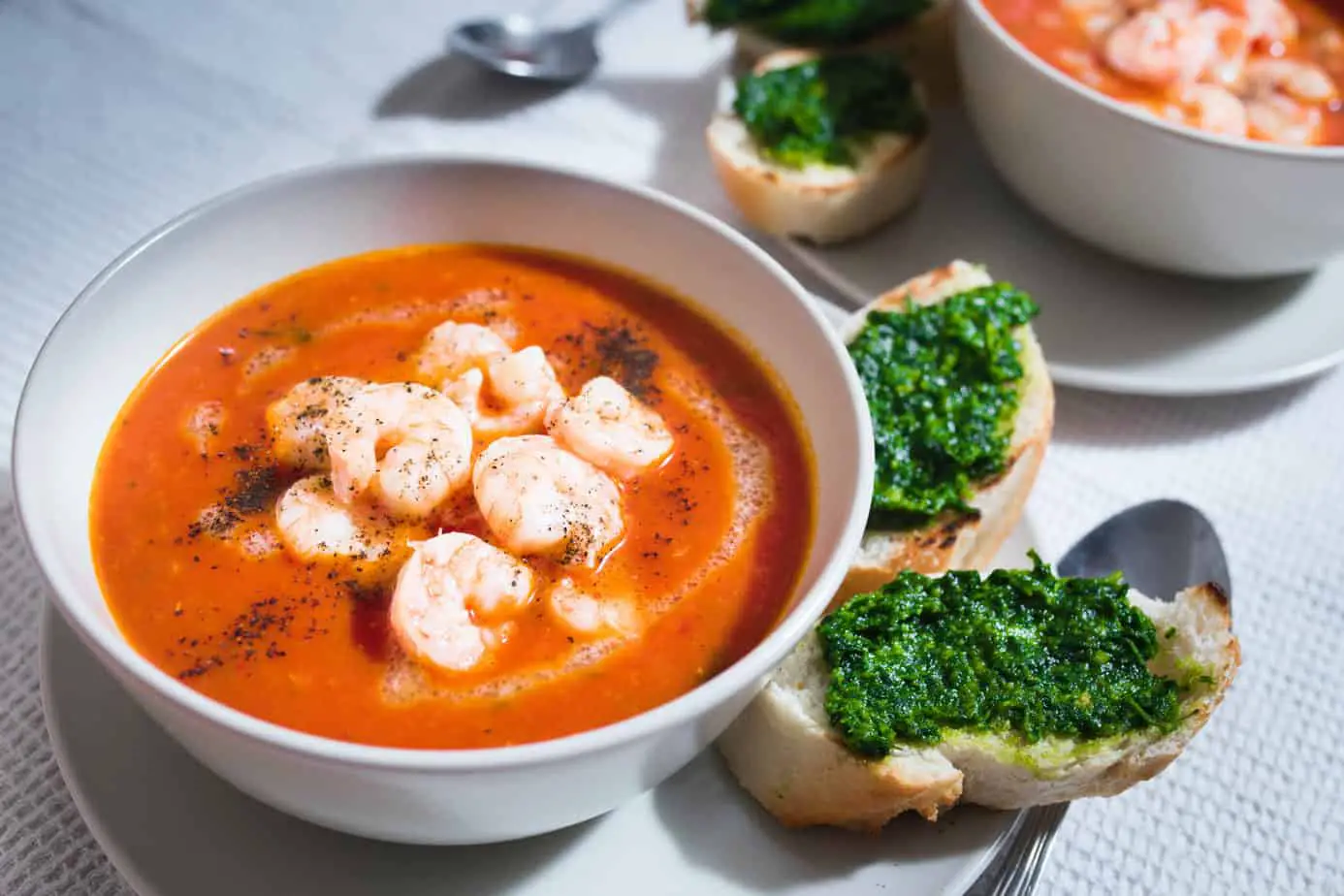
Bisque is a type of creamy soup that originated in France. It is known for its smooth and velvety texture, which is achieved by pureeing the ingredients, typically seafood like lobster, crab, or shrimp. Unlike chowder, bisque does not contain chunks of ingredients. Instead, it focuses on creating a rich and decadent flavor. The base of a bisque is often a combination of broth, cream, and wine, which gives it a luxurious taste. Bisque is a delicacy often served at special occasions or enjoyed as a gourmet dish. It offers a unique dining experience that elevates the palate and satisfies the cravings for a luxurious meal. So, whether you’re a seafood lover or a connoisseur of fine cuisine, exploring the realm of bisques will surely be a delightful journey.
Origins And Evolution Of Bisque
Bisque, a creamy soup that tantalizes taste buds with its rich flavor, has a fascinating history. Its origins can be traced back to 17th century France, where it was initially made with crushed crayfish shells as a base. Over time, the recipe evolved to include other types of seafood like lobster, crab, and shrimp. The word “bisque” itself comes from the Bay of Biscay in France, known for its abundance of seafood. As bisque made its way to different culinary traditions, variations emerged, showcasing the creativity and adaptability of chefs worldwide. Today, bisques continue to be enjoyed as a luxurious delight, offering a taste of culinary heritage with each creamy spoonful.
Features That Distinguish Bisque From Chowder And Soup
Bisque stands apart from chowder and soup due to its unique features. Firstly, bisque has a velvety smooth texture, achieved by pureeing the main seafood ingredient. This sets it apart from the chunkiness of chowder and the broth-like consistency of soup. Additionally, bisque is traditionally enriched with cream and wine, giving it a luxurious richness. While chowder and soup can have a variety of flavors, bisque is often characterized by the distinct taste of the seafood used. These qualities make bisque a decadent and indulgent choice for those seeking a refined dining experience.
Comparison Of Chowder, Soup, And Bisque

When comparing chowder, soup, and bisque, several key factors come into play. The main distinction lies in the texture and consistency of these dishes. Chowder is known for its chunky and hearty nature, often featuring ingredients like potatoes and clams or corn. Soup, on the other hand, tends to have a thinner broth-like consistency and can vary greatly in flavor and ingredients. Bisque stands out with its velvety smooth texture, achieved by pureeing the main seafood ingredient. Additionally, bisque is traditionally enriched with cream and wine, giving it a luxurious richness. These factors make each of these soups unique and appealing in its own way.
Texture, Ingredients, And Flavor Profiles Compared
When comparing chowder, soup, and bisque, there are notable differences in their texture, ingredients, and flavor profiles. Chowder has a chunky and hearty texture, thanks to ingredients like potatoes or clams, and is typically creamy in consistency. Soups, on the other hand, have a thinner broth-like texture and can vary greatly depending on the ingredients used. They can range from light and refreshing to rich and complex in flavor. Bisques stand out with their velvety smooth texture, achieved by pureeing the main seafood ingredient. The addition of cream and butter enhances the flavors, resulting in a luxurious and indulgent taste experience. So, whether you prefer something chunky and substantial, light and flavorful, or velvety rich, there is a soup option to delight every palate.
Best Occasions And Serving Suggestions For Each Type
Chowder, with its hearty and chunky texture, is perfect for cold winter nights or cozy gatherings. It can be served as a main course with crusty bread or as a comforting appetizer. Soups, being versatile, are ideal for any occasion. Light and refreshing soups are great for summer picnics, while rich and complex soups can impress guests at formal dinners. Bisques, with their luxurious texture and indulgent flavors, are ideal for special occasions and elegant dinner parties. They can be served as an elegant starter or as a decadent main course paired with a crisp salad.
Conclusion
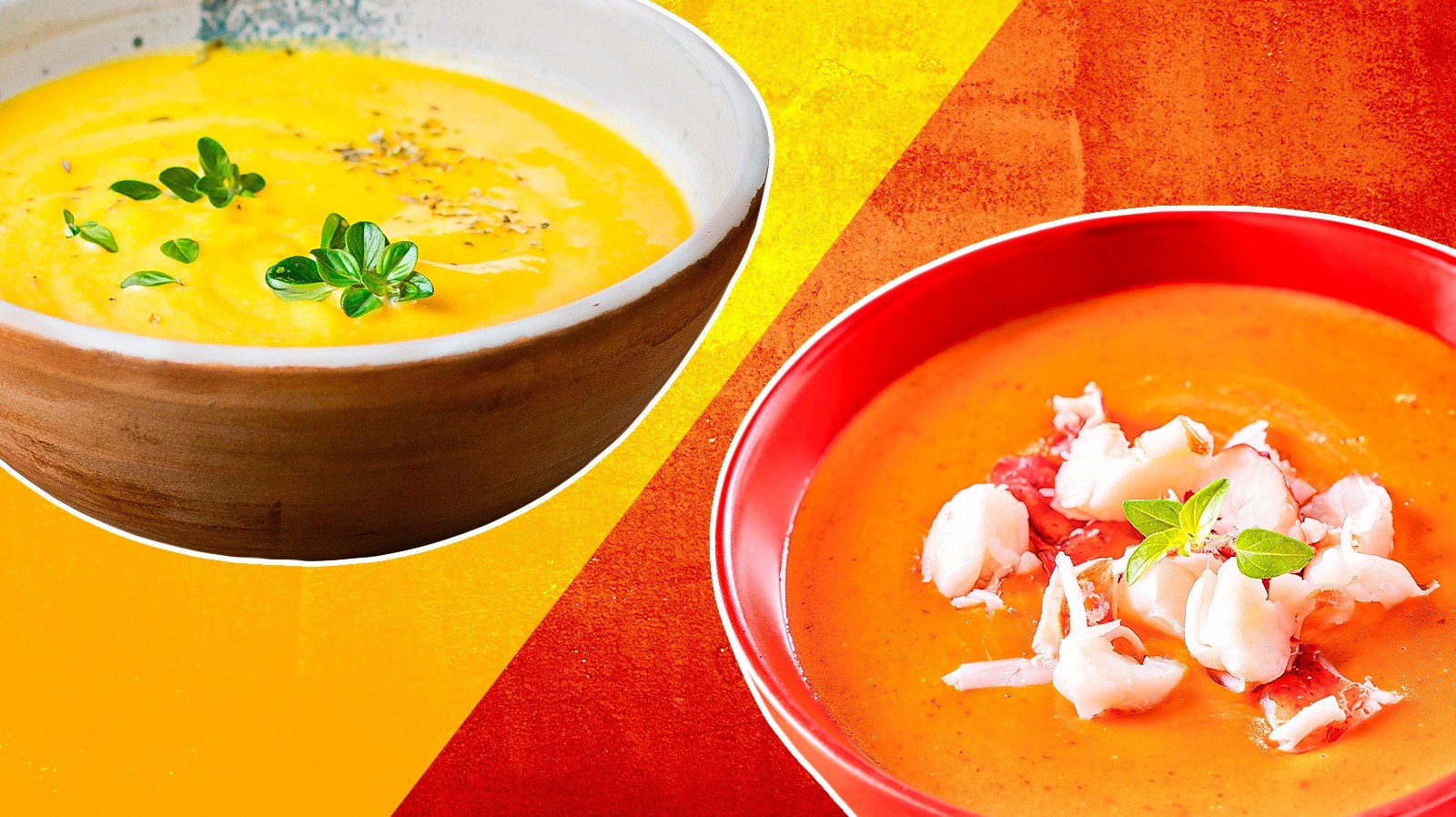
In conclusion, understanding the differences between chowder, soup, and bisque allows one to appreciate the unique qualities that each brings to the table. Chowder offers a hearty and chunky texture, often featuring seafood and a creamy base. Soup, on the other hand, is versatile and can be made with a variety of ingredients, offering a range of flavors and textures. Bisque, with its luxurious texture and indulgent flavors, is perfect for special occasions and elegant gatherings. By exploring and enjoying the diverse world of soups, one can truly experience the delicious and comforting nature of these versatile dishes.
Summary Of The Differences Between Chowder, Soup, And Bisque
Chowder, soup, and bisque are all delicious and comforting dishes, but they have distinct characteristics that set them apart.
Chowder is known for its chunky texture and creamy base, often featuring seafood or vegetables. It originated in coastal regions and has popular variations like New England Clam Chowder and Manhattan Clam Chowder.
Soup, on the other hand, is versatile and can be made with a variety of ingredients. It can be broth-based or cream-based, and it offers a wide range of flavors and textures.
Bisque is a luxurious and indulgent soup, typically made with shellfish, such as lobster or crab. It has a smooth and creamy texture and is often served at special occasions.
Overall, understanding the differences between chowder, soup, and bisque allows one to appreciate the unique qualities that each brings to the table, and to experiment with different flavors and textures in soups.
Recommendations For Exploring And Enjoying Diverse Soup Varieties
To fully explore and enjoy the diverse world of soups, try these recommendations. First, experiment with different regional cuisines and their signature soups. From Italian minestrone to Mexican tortilla soup, each culture offers unique flavors and ingredients. Second, venture beyond traditional recipes and explore fusion soups, combining elements from different cuisines. Third, incorporate seasonal produce to enhance the freshness and flavor of your soups. Finally, don’t be afraid to add a personal touch by playing with spices, herbs, and toppings to create your own signature soup. So, grab a ladle and embark on a delicious soup adventure!
FAQ About Chowder Vs Soup Vs Bisque: Deciphering The Soup Spectrum
Q: What is the main difference between chowder, soup, and bisque?
A: The main difference lies in their consistency and ingredients. Chowder is a thick soup usually containing chunks of ingredients like seafood or vegetables. Soup is a liquid-based dish with various ingredients cooked in a broth or stock. Bisque is a smooth and creamy soup, often made with shellfish like lobster or crab.
Q: Are there specific types of chowder, soup, and bisque based on their ingredients?
A: Yes, there are numerous variations of chowder, soup, and bisque depending on the region and primary ingredients used. For example, New England clam chowder is a popular chowder variant, while minestrone is a well-known vegetable soup. Bisque varieties can include tomato bisque and mushroom bisque.
Q: How are chowder, soup, and bisque best served?
A: Chowders are typically served as a hearty main course, often accompanied by bread or crackers. Soups are commonly served as a starter or light meal, and bisques are often served in smaller portions as appetizers due to their richness.
Q: Can chowder, soup, and bisque be frozen and reheated?
A: While chowder, soup, and bisque can be frozen for later consumption, it is important to note that the texture and consistency may slightly change upon reheating. Ensure proper storage in airtight containers and follow appropriate thawing and reheating techniques for the best results.
Q: Are there any dietary considerations to keep in mind when choosing between chowder, soup, and bisque?
A: Yes, individuals with dietary restrictions or preferences should be mindful of the ingredients used in chowder, soup, and bisque. For example, those with shellfish allergies should avoid bisque varieties containing shellfish, while individuals watching their calorie intake may opt for lighter soup options over rich chowders.

ToroGrill Canada is excited to share our one-of-a-kind and authentic South American BBQ flavors with the wonderful people of Canada. Our journey began with a passion for bringing South America’s rich and vibrant culinary traditions to a new audience, and we have been dedicated to this mission ever since. Our story is one of inspiration, hard work, and the pursuit of excellence. Every recipe, every ingredient, and every cooking technique has been carefully honed and perfected to ensure that when you take a bite of our food, you experience the true essence of South American BBQ.